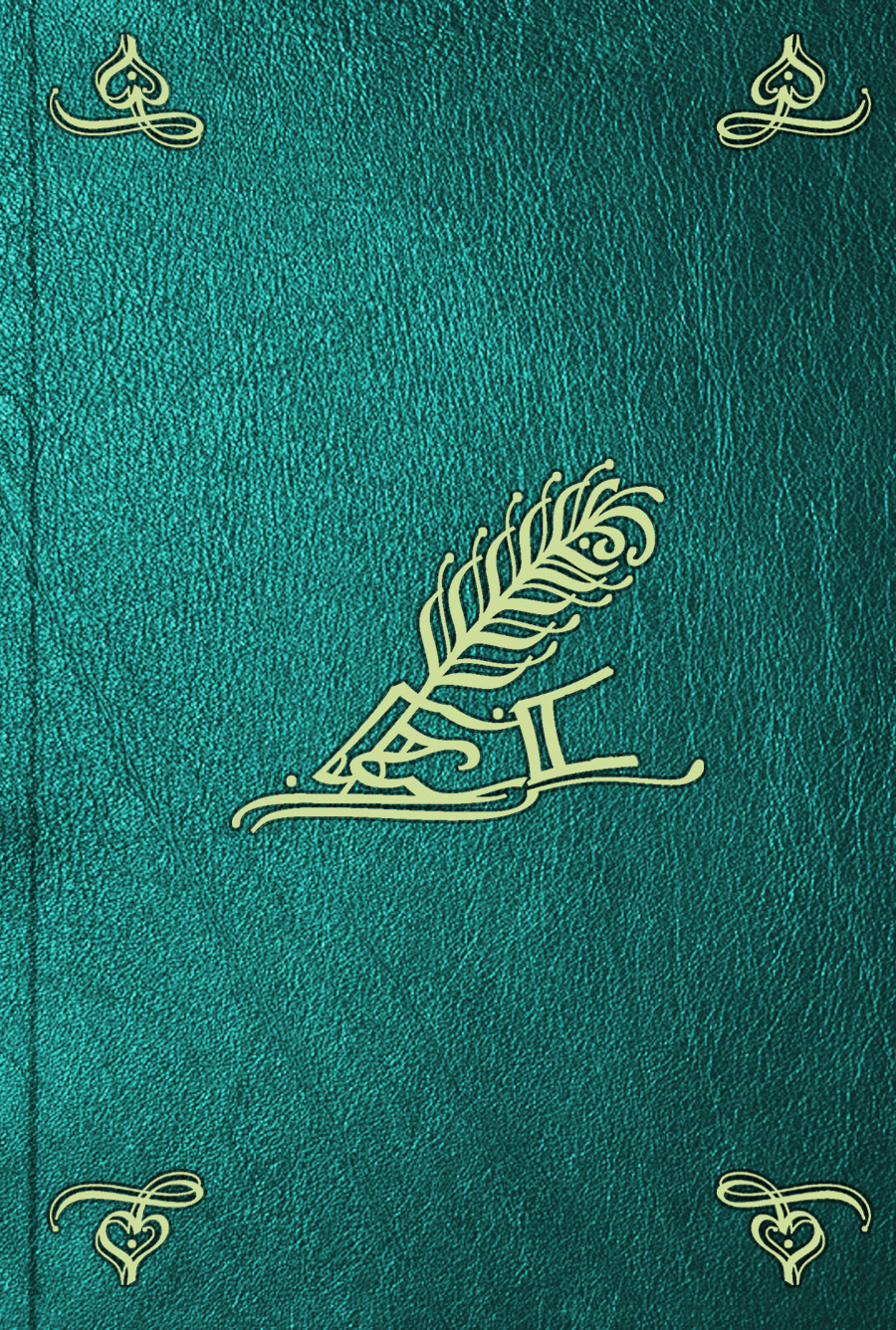Электронная книга: Giorgio Vasari «Vite de più eccellenti pittori, scultori ed architetti. T. 6»

|
Примечание: Жизнеописания наиболее знаменитых живописцев, ваятелей и зодчих Полный вариант заголовка: «Vite de' piu eccellenti pittori, scultori e architetti. Tomo 6 / scritte da Giorgio Vasari : edizione arricchita di note oltre quelle dell' edizione illustrata di Roma». Издательство: "Библиотечный фонд" (1772)
электронная книга Скачать бесплатно на Litres |
Другие книги автора:
| Книга | Описание | Год | Цена | Тип книги |
|---|---|---|---|---|
| Vite de più eccellenti pittori, scultori ed architetti. T. 4 | Примечание: Жизнеописания наиболее знаменитых живописцев, ваятелей и зодчих Полный вариант заголовка: «Vite… — Библиотечный фонд, электронная книга Подробнее... | электронная книга | ||
| Vite de più eccellenti pittori, scultori ed architetti. T. 2 | Примечание: Жизнеописания наиболее знаменитых живописцев, ваятелей и зодчих Полный вариант заголовка: «Vite… — Библиотечный фонд, электронная книга Подробнее... | электронная книга | ||
| Vite de più eccellenti pittori, scultori ed architetti. T. 3 | Примечание: Жизнеописания наиболее знаменитых живописцев, ваятелей и зодчих Полный вариант заголовка: «Vite… — Библиотечный фонд, электронная книга Подробнее... | электронная книга | ||
| Vite de più eccellenti pittori, scultori ed architetti. T. 1 | Примечание: Жизнеописания наиболее знаменитых живописцев, ваятелей и зодчих Полный вариант заголовка: «Vite… — Библиотечный фонд, электронная книга Подробнее... | электронная книга | ||
| Leonardo da Vinci | Leonardo da Vinci — Подробнее... | бумажная книга |
Giorgio Vasari
Infobox Artist
bgcolour =
name = Giorgio Vasari

imagesize = 210px
caption = Vasari's self-portrait
birthdate =
location =
deathdate =
deathplace =
nationality = Italian
field =
training =
movement =
works = Biographies of Italian artists
patrons =
awards =
Giorgio Vasari (
Biography
Vasari was born in
In 1529 he visited
As an architect, Vasari was perhaps more successful than as a painter. The
In Rome, Vasari worked with
Vasari enjoyed a high repute during his lifetime and amassed a considerable fortune. In 1547 he built himself a fine house in Arezzo (now a museum honoring him), and spent much labour in decorating its walls and vaults with paintings. He was elected one of the municipal council or
In 1563, he helped found the Florence "Accademia del Disegno" (now the "
Vasari died at Florence on
"' The "Vite"
As the first Italian art historian, he initiated the genre of an encyclopedia of artistic biographies that continues today. Vasari coined the term "
The work has a consistent and notorious bias in favour of Florentines and tends to attribute to them all the new developments in Renaissance art—for example, the invention of
Vasari's biographies are interspersed with amusing gossip. Many of his anecdotes have the ring of truth, although most are likely inventions.Fact|date=August 2008 Others are generic fictions, such as the tale of young
Vasari includes a sketch of his own biography at the end of his "Vite", and adds further details about himself and his family in his lives of Lazzaro Vasari and Francesco Salviati. The "Lives" have been translated into French, German, Spanish and English.
* [http://easyweb.easynet.co.uk/giorgio.vasari/vaspref.htm Excerpts from the "Vite" combined with photos of works mentioned by Vasari.] "'
Copies of Vasari’s "Lives of the Artists" online
* [http://www.efn.org/~acd/vite/VasariLives.html “Giorgio Vasari's Lives of the Artists.”] Website created by Adrienne DeAngelis. Currently incomplete, intended to be unabridged, in English.
* [http://bepi1949.altervista.org/vasari/vasari00.htm “Le Vite."] 1550 Unabridged, original Italian.
* [http://www.archive.org/details/storiesoftheital007995mbp “Stories Of The Italian Artists From Vasari.”] Translated by E L Seeley, 1908. Abridged, in English.
* [http://biblio.cribecu.sns.it/vasari/consultazione/Vasari/indice.html Le Vite - Edizioni Giuntina e Torrentiniana]
* [http://www.storiarte.altervista.org/vasarielenco.htm Gli artisti principali citati dal Vasari nelle "Vite" (elenco)]
References
*"The Lives of the Artists" (Oxford World's Classics). Oxford University Press, 1998. ISBN 0-19-283410-X
*"Lives of the Painters, Sculptors and Architects, Volumes I and II". Everyman's Library, 1996. ISBN 0-679-45101-3
*"Vasari on Technique". Dover Publications, 1980. ISBN 0-486-20717-X
*"Life of Michelangelo". Alba House, 2003. ISBN 0-8189-0935-8
* [http://www.articlemyriad.com/36.htm Biography of Vasari and analysis for four major works]
* [http://www.kirjasto.sci.fi/gvasari.htm Brief "Vita"]
Источник: Giorgio Vasari
См. также в других словарях:
Le Vite — Frontispice de Le Vite Le Vite (Les Vies) (en entier Le Vite de più eccellenti pittori, scultori e architettori, soit littéralement « Les Vies des meilleurs peintres, sculpteurs et architectes ») est un ouvrage écrit au Cinquecento par… … Wikipédia en Français
Santa Maria della Scala (Siena) — Fassade des Gebäudekomplexes am Piazza del Duomo … Deutsch Wikipedia
Bibliographie D'histoire Et De Théories De L'art — Liste d historiens de l art et de théoriciens de l art Sont indiqués pour ces auteurs de référence ayant contribué aux réflexions sur l art et son histoire, sur la culture, uniquement les principaux titres publiés (censés justifier leur présence… … Wikipédia en Français
Bibliographie d'histoire et de theories de l'art — Liste d historiens de l art et de théoriciens de l art Sont indiqués pour ces auteurs de référence ayant contribué aux réflexions sur l art et son histoire, sur la culture, uniquement les principaux titres publiés (censés justifier leur présence… … Wikipédia en Français
Bibliographie d'histoire et de théories de l'art — Liste d historiens de l art et de théoriciens de l art Sont indiqués pour ces auteurs de référence ayant contribué aux réflexions sur l art et son histoire, sur la culture, uniquement les principaux titres publiés (censés justifier leur présence… … Wikipédia en Français
Historiens et théoriciens de l'art — Liste d historiens de l art et de théoriciens de l art Sont indiqués pour ces auteurs de référence ayant contribué aux réflexions sur l art et son histoire, sur la culture, uniquement les principaux titres publiés (censés justifier leur présence… … Wikipédia en Français
